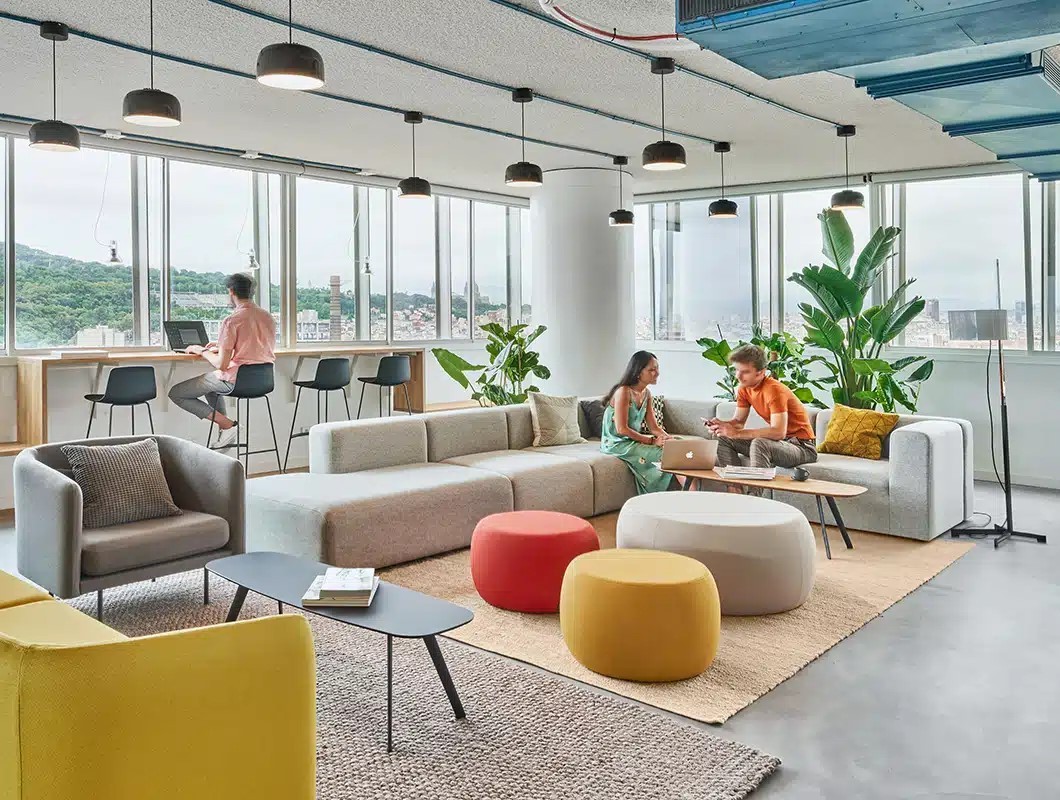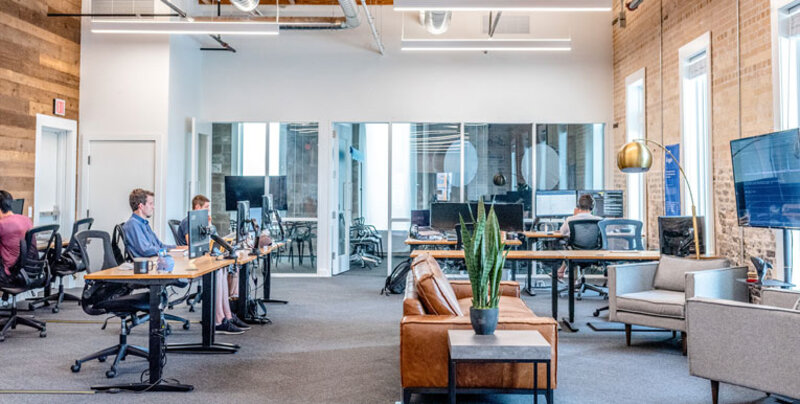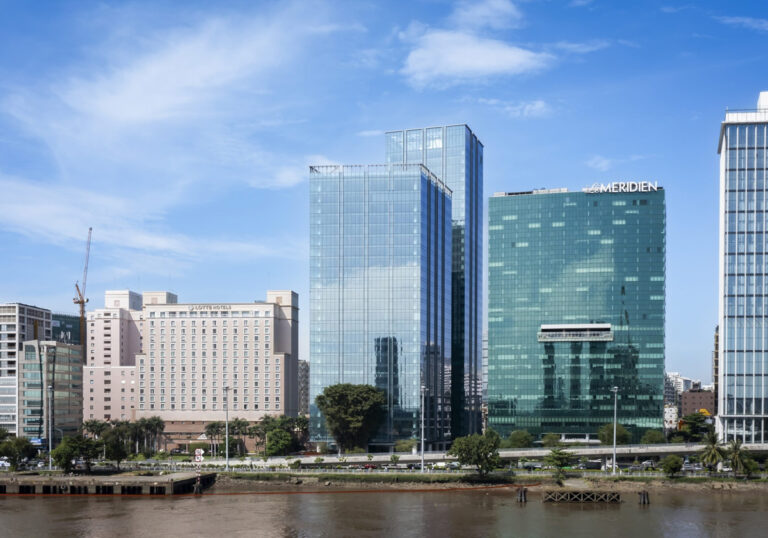What is Coworking Space? The advantages & disadvantages

In the commercial real estate world, the emergence of coworking spaces has marked a significant turning point, reflecting the increasing demand for flexible and optimized workspaces. Coworking spaces, or shared work environments, are not only a smart financial solution for small businesses, freelancers, and startups but also an opportunity to expand networks and stimulate creativity through a diverse and collaborative working environment.
Table of Contents
1. What is Coworking Space?
A coworking space is a shared office model where individuals and businesses can rent workspaces by the hour, day, or month. What sets coworking spaces apart is not only the provision of a communal workspace but also the facilitation of networking, sharing, and collaboration among members, thereby opening up new business and creative opportunities.
Coworking spaces are typically equipped with all necessary amenities, including individual work desks, meeting rooms, group discussion areas, as well as utilities such as high-speed Wi-Fi, printers, and coffee bars. Some shared workspaces also offer support services like legal advice, accounting, and event management, catering to all the needs of their members.
2. Benefits of Coworking Spaces
2.1 Flexibility and Cost Savings
Coworking spaces allow individuals and businesses to significantly save on the costs of renting and managing a traditional office, while also providing flexibility in choosing a workspace and working hours that suit their needs.
2.2 Community Networking
The coworking space environment facilitates the building of business networks and professional exchanges, helping to expand opportunities and enhance collaboration between individuals and businesses.
2.3 Stimulating Creativity
Working in a diverse professional and cultural space stimulates creativity and innovation, especially when members share their knowledge and experiences.
2.3 Building a Professional Image
With a prestigious business address, customer services, and an organized information system, along with professionally arranged offices, your image will undoubtedly become more professional. Indeed, your business operates professionally in the perception of partners and customers. In fact, you are also very professional when using shared office services.
3. Who is Coworking Space Suitable For?
Although it brings many benefits to tenants, a shared workspace (co-working) cannot completely replace the traditional office floor. So, who is coworking space suitable for?
1. Small and medium-sized businesses looking to save costs, optimize personnel, and use available resources and assets effectively.
2. Directors or employees who do not work directly at their company due to frequent business trips, being away from home, or expanding markets from other provinces.
3. Individuals who are preparing or have just established a business.
4. Independent business consultants/Project teams.
5. Foreign companies conducting market research or establishing a representative office in Vietnam needing enough space for a few employees.
6. Freelancers related to technology: Freelancers, MMO workers, SEO-ers, Online Marketers…
4. The advantages & disadvantages of Co-Working Spaces
Whether you’re a newcomer freelancer, the founder of a “unicorn” startup, or the owner of a sizable business, you’ve likely considered choosing a Co-Working Space as your company’s headquarters. Of course, beneath the glitz of an open, dynamic, flexible space are disadvantages that you might not have noticed during your first or second visit.
To give business owners a clearer picture of this relatively new office type, we present this article on the advantages of Co-Working Spaces and the limitations of working in such an open environment.
4.1 Advantages
Flexibility
Unlike the traditional office model, Co-Working spaces offer business owners flexible leasing packages.
The cost of renting office space is calculated monthly (instead of quarterly, as in the traditional model), and the variety of choices (in terms of office size and area) is one of the standout benefits of the Co-Working Space model for businesses.
State-of-the-Art Facilities Available
Another advantage of this open office model is the availability of modern office facilities.
Instead of the hassle of installing furniture, designing an attractive workspace, or spending a fortune on computers, printers, etc., you have all these facilities at your disposal when choosing a Co-Working Space as your business’s next destination.
Collaborative Work Environment
You will undoubtedly expand your network when working in an open environment like a Co-Working Space.
A dynamic and open workspace also energizes your company’s members, contributing their best for an effective workday.
No Maintenance or Office Repair Costs
When working in a Co-Working Space, you won’t have to worry about how much it will cost to fix the lighting system or Wi-Fi network in your workspace.
All these tasks are the responsibility of the building owner. Now, you can focus 100% of your valuable time on work.
Valuable Learning Opportunities
Most Co-Working Spaces organize seminars and workshops specifically for members of organizations and businesses working in the office.
This is a valuable opportunity for your company members to learn and improve their skills through these collective workshops.
4.2 Disadvantages
Privacy Among Companies
Despite the financial benefits highlighted by owners of Co-Working office buildings for businesses, this workspace conceals many issues you might not have considered. An obvious disadvantage you can imagine when renting a Co-Working Space is the privacy and effectiveness of communication among company members.
There are also concerns about security and confidentiality when businesses work in a shared space like Co-Working Spaces.
Lack of Focus
As the working hours of businesses differ, you cannot expect employees from other companies to eat, sleep, rest, and work according to the same schedule as you. This can lead to distractions during the most critical work moments.
Not to mention, serving multiple businesses forces the leasing entity to fix working hours from 8 AM to 5 PM. This could mean your employees don’t have space for overtime or staying late at the office to complete pending work.
Despite some limitations, it’s undeniable that Co-Working Spaces are a suitable model for small and medium-sized enterprises, both financially and in terms of flexible, open workspace.
5. Comparison Between Co-Working Spaces and Traditional Offices
Although a relatively new model, Co-Working Spaces have completely changed how employees work and interact with each other in the workplace.
If the Co-Working Space environment is suitable for Freelancers, Startups, and small to medium-sized businesses, the traditional office model is more appropriate for large corporations and enterprises.
| Criteria | Shared Office | Traditional Office |
| Expense | Lower, flexible payments | Higher, long-term contract |
| Flexible | High (hourly, daily, monthly) | Low (usually by year) |
| Ownership | Do not have | Yes, businesses own or rent long-term |
| Design and decoration | Designed and decorated, regularly updated | Businesses design and decorate themselves as desired |
| Utilities and services | Common amenities such as Wi-Fi, printer, cafe counter, are often included in the rental price | Businesses install and pay themselves |
| Private space | Lower than traditional offices | High, customizable workspace |
| Location | Usually in central areas or near residential areas | Depends on the business’s choice |
Co-Working Spaces, with their distinctive features of flexibility, cost savings, and community connectivity, are increasingly becoming a popular choice for freelancers, startups, and small businesses as well as large companies looking for versatile workspaces. This model not only meets the demand for a professional workspace but also opens up opportunities for collaboration and exchange, thereby promoting creativity and innovation. With the continuous development of the labor market and the high demand for flexibility in work, coworking spaces promise to remain an indispensable part of the future work structure.

Editor and content team manager at Maison Office.
With over 5 years of experience in consulting and extensive content editing in the real estate services and interior design field. Sharing valuable information with customers, partners, and attracting millions of views.






